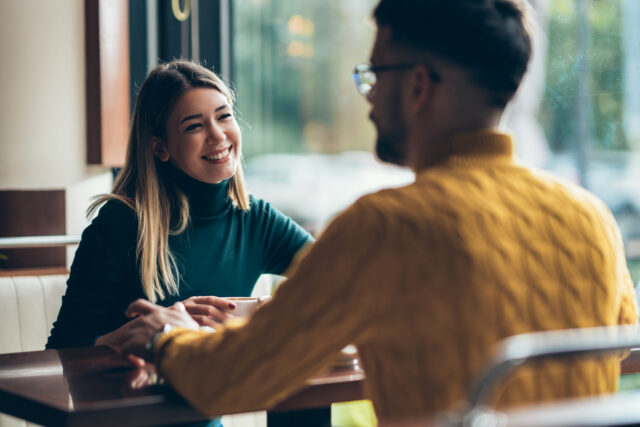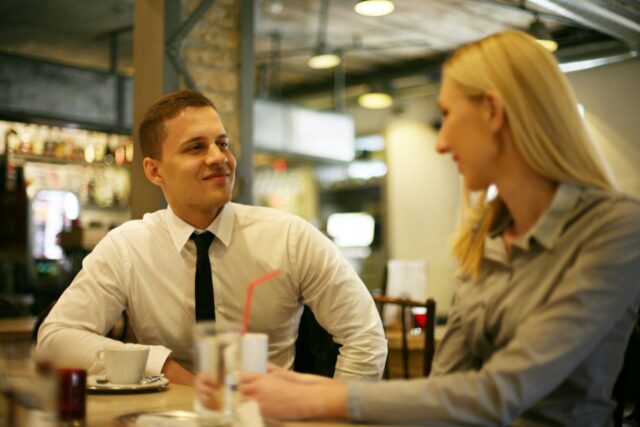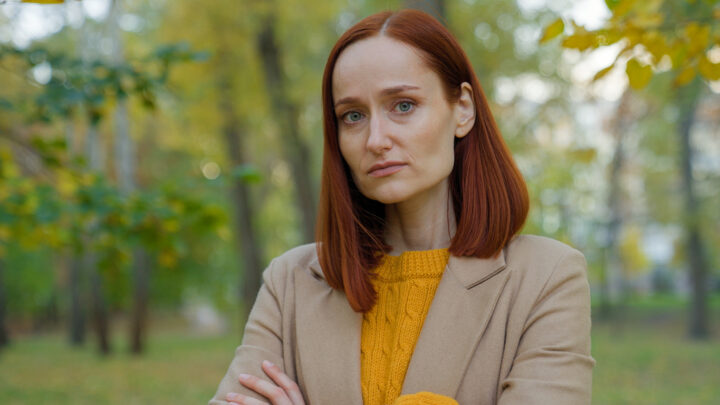They say that the eyes are the window to the soul, but that doesn’t always make deciphering what’s behind those so-called windows very easy.

Some people are harder to read than others, whether because they purposely keep their cards close to their chest or they’re just naturally more reserved and private. However, you can actually get to the core of who someone is by paying attention to the looks they give and the way they use this body part if you hone your perception skills and use them well.
1. An eye roll can mean a lot.

We all know the classic eye roll. It’s often paired with a sigh and a “really?” expression. This one screams frustration, impatience, or sarcasm. If you spot it, the person might feel unheard or annoyed. A simple, “Alright, I get it, what’s up?” can ease the tension and show you’re willing to listen. Eye rolls don’t have to end in drama—they’re often just a sign to pause and reassess. Plus, acknowledging their reaction with humour can turn things around quickly.
2. Wide eyes speak volumes.

When someone’s eyes widen, it usually means they’re surprised—or in some cases, utterly shocked. This could be good (“You did what?!” with a hint of excitement) or bad (“You did what?” with sheer horror). Pay attention to context. If it’s the former, celebrate with them; if it’s the latter, offer reassurance or clarity to calm their nerves. Sometimes, even a simple smile or chuckle can help to diffuse the shock.
3. The lingering gaze says it all.

If someone maintains eye contact longer than usual, it’s often a sign of deep interest or connection. This could be romantic, professional, or friendly, depending on the situation. Respond with equal engagement if you’re comfortable—or gently redirect if it feels too intense. People want to feel seen, but respecting boundaries keeps things healthy. Keep in mind that prolonged eye contact can also be unintentional, so don’t read too much into it right away.
4. Squinting suggests suspicion.

A quick squint can mean someone is trying to figure something out—or they’re sceptical about what’s being said. It’s the “Hmm, are you sure?” look. Address it by clarifying your point or asking, “Does that make sense?” Offering openness can often dissolve their doubt. On the other hand, a squint accompanied by a smirk might suggest playful teasing, so gauge accordingly.
5. The downward glance speaks volumes.

Looking down isn’t always a sign of submission; sometimes, it reflects embarrassment, shyness, or deep thought. If someone’s avoiding your gaze, create a safe space for them to open up. A gentle, “What’s on your mind?” can help lift their mood and ease their discomfort. It’s worth noting that some people look down when recalling details, so it might not be emotional at all.
6. Blinking can reveal nerves.
 Source: Unsplash
Source: Unsplash Frequent blinking often indicates stress or discomfort. It’s like their body is screaming, “Help me get out of here!” If you notice it, try lightening the conversation or offering them a break. Giving someone room to breathe can work wonders. Alternatively, if the blinking is combined with rapid speech, they might just be overwhelmed and need a chance to slow down.
7. Glazed-over eyes be a sign of disinterest.

When someone’s gaze seems to drift off, it’s likely they’re bored or distracted. This isn’t a personal insult—it’s human! Pull them back with something engaging like, “What do you think about this?” Sometimes a little interaction is all it takes to regain their attention. If the disinterest persists, it might be time to change the subject altogether.
8. A tear in the corner shows vulnerability.
 Source: Unsplash
Source: Unsplash Tears, whether held back or flowing, are a clear sign of emotional overwhelm—be it joy, sadness, or frustration. Offer kindness without making it awkward. “I’m here if you need anything” can be enough to show support without prying. Sometimes, just sitting quietly with them in solidarity can make all the difference.
9. Raised eyebrows point to curiosity.

When someone raises their eyebrows, they’re intrigued or wanting a bit more information. It’s their non-verbal way of saying, “Go on, I’m listening!” Respond by elaborating on your point or encouraging their input. Engaging their curiosity can lead to a deeper and more meaningful conversation.
10. The sideways glance has layers.

A quick sideways glance can mean suspicion, mischief, or even flirtation. Watch for accompanying expressions—a smirk might mean they’re joking, while a frown suggests doubt. React accordingly, whether it’s by joining in the fun or addressing their concerns. Sometimes, the glance can simply mean they’re checking their surroundings, so don’t overanalyse every look.
11. The unfocused stare is often a sign of distraction.

When someone’s eyes glaze over and their focus drifts, they’re likely lost in thought. Gently bring them back with a casual, “Hey, where’d you go just now?” They’ll appreciate your attentiveness without feeling called out. It might also be a sign they’re mentally exhausted, so offering a change of pace can help.
12. Darting eyes scream nervousness.
 Source: Unsplash
Source: Unsplash If someone’s eyes are darting around, they’re either uncomfortable or searching for an escape route. Ease their nerves by creating a more relaxed atmosphere. A bit of humour or reassurance can help ground them in the moment. Pay attention to other cues, like body language, to fully understand their discomfort.
13. Soft, relaxed eyes show trust.

When someone’s gaze is calm and steady, it’s a sign they feel safe and at ease around you. Build on this by maintaining open and warm communication. Trust is a two-way street, and their body language shows you’re on the right path. This type of connection creates deeper relationships and mutual respect.
14. The prolonged blink hides emotion.
 Source: Unsplash
Source: Unsplash A slow, deliberate blink can mean someone’s processing a lot—whether it’s disbelief, annoyance, or exhaustion. Respect their need for a moment. A quiet “Take your time” lets them know you’re patient and understanding. If the blinking continues, consider asking if they need a break or some time alone.
15. Eye scrunches express amusement.

You know that crinkle at the corners of the eyes when someone’s genuinely laughing? That’s pure joy. If you spot it, bask in the moment. Sharing laughter is one of the best ways to connect emotionally. Moments like these remind us how powerful small, genuine reactions can be.




